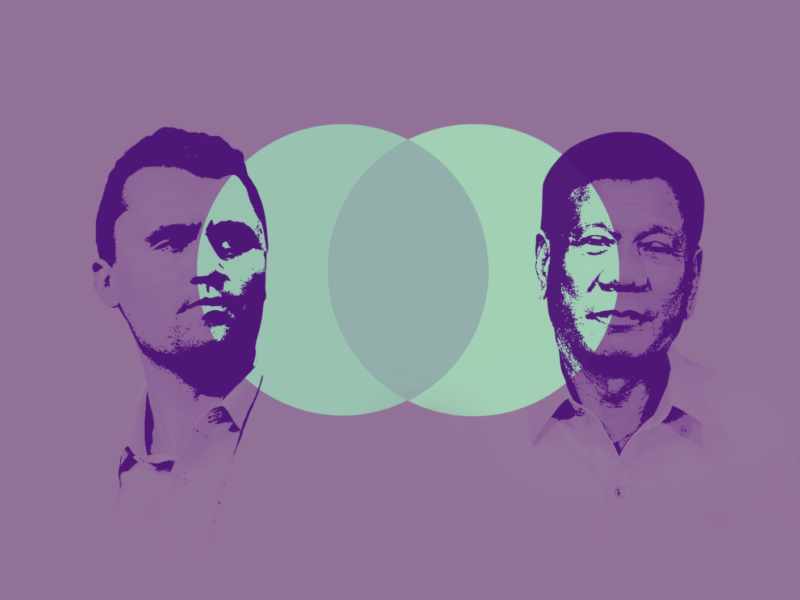Are today’s voters misogynistic, racist and miseducated? Maybe a lot of them are but there is another reason as to why someone like Trump can still win major elections.
During his first term as the President of the United States of America, Donald Trump committed abuses of power, fell short in achieving major economic goals, and was ultimately met with a number of substantiated legal charges that ranged from allegations of sexual abuse to accusations of election subversion. But even after all that–come January next year—he’ll once again be sworn into one of the most powerful offices in the world.
For the democrats, there was hope that this wouldn’t happen. They beat him in 2020 when current US President Joe Biden ran against him and managed to swing crucial battleground states. His recent opponent, current US Vice President Kamala Harris, had many of Biden’s advantages: she had the backing of the scientific community, respected economists and the academe. She also had qualifications that dwarfed Trump’s and she didn’t go into this race with a reputation marred by a variety of indiscretions. But come November 5, Trump still won by a large margin and many were left reeling.
How did we get here?
Since the 2024 US election started leaning heavily towards Trump, people have been trying to explain it by explaining the American people. There are those who theorized that America still has a race problem. And while that might’ve not been enough to stop them from electing Barack Obama in 2008 and 2012, it compounded another problem many Americans are accused of having: misogyny.
It’s a theory that has something to stand on. Trump, after all, has won two presidential elections, and all of his victories came at the expense of women (with Hilary Clinton being the first.) His one loss in between was doled out to him by a white man.
People also theorized that the election results is a symptom of America’s educational crisis with Trump having won in many areas characterized by poor academic performances.
But to say that many Americans are simply sexist, racist and miseducated is to make the mistake of ignoring another crucial reality that may have contributed deeply to the latest election results: the fact that many of them (like a lot of people in the world) are also very angry. And the election of Trump is an expression of their rage.
Since 2014, the trend towards populist movements and leaders in liberal democracies has been on the rise. The era of optimism for reform, characterized by the mood following the economic fallout of 2009, was embodied by leaders such as Benigno Aquino III, Enrique Peña Nieto, David Cameron, Angela Merkel, and Obama. However, this optimism has turned sour as these regimes intentionally tap their way to please the establishment, erasing the momentum they once had and scattering it into the winds. Movements like that of Syriza, Duterte, Brexit, Trump, and Morena represent this cataclysm, signaling a distinct shift from traditional political engagement to a more tumultuous landscape.
The causes of this political rage have become almost cliché, but they are nonetheless vital to repeat. Systemic impotence has bled into the daily lives of ordinary citizens, with many unable to afford necessities that were once abundant or struggling to make ends meet. While economic forecasts parade an endless array of statistics indicating an upward trajectory, the benefits are seldom, if ever, felt by the majority. This disconnect has bred deep frustration and a pervasive sense of disenfranchisement, leading many to conclude that everything is fraudulent. The mood is currently dominated by a powerful impulse to tear down the veil that protects the established order, exposing the undercurrents of resentment that have built up over the years.
As a result, the choice between taking a flamethrower to incinerate state institutions or dousing them with petrol becomes a preferable option for many, overshadowing more civil appeals for reform. The voices of stability are drowned out by those who demand radical measures, reflecting a broader sentiment that the existing framework is no longer tenable. This fierce inclination to disrupt rather than reform is a reflection of deep-seated anger, as many feel that bureaucratic processes and traditional methods of engagement have failed them.
This chronic dissatisfaction suggests that political rage is not a fleeting phase. Rather, it is a manifestation of enduring dissatisfaction with the status quo. Many citizens no longer see conventional politics as an instrument to their ongoing discontent. Instead, they perceive rage-filled movements as the cathartic outlet for their frustrations, enabling them to reclaim a sense of agency in an increasingly indifferent landscape. This transformation of political engagement may feel chaotic, but it is emblematic of a significant shift in how individuals seek to assert their will.
In the long term, while political rage may seem unsettling, it could pave the way for meaningful change. By challenging entrenched power dynamics, this discontent has the potential to inspire a generation to become more politically active and engaged. An era characterized by apathy may be giving way to one of active participation, where individuals mobilize not just to voice their anger but to demand a more inclusive and representative political process.
The challenge now for everyone is to harness this wave to a sense of direction, for absent any guidance, it will lead to a road to nowhere, and for others to fill the void.
For the child who is not embraced by the village will burn it down to feel its warmth. And in this world where people elected personalities if only to flash a middle finger at their perceived enemies, many are acting like children.



